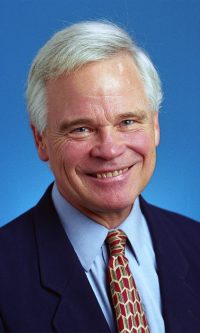DG MARTIN COLUMN: Finding the Lost Colony
The story of the Lost Colony is North Carolina’s founding myth.
Except for one thing, it may be the best founding myth of any U.S. state or any country in the world.

D.G. Martin
It goes like this: A group of about 100 people who lived in England sailed across the ocean, and settled on an island in what is now North Carolina. A child was born, thus the first child of English parents born in America. The baby girl was named Virginia Dare.
Then the myth collapses. The colonists disappeared and could not be found.
Ever.
Without a conclusion, our story, our founding story, is incomplete.
Over the years scholars, adventurers, and some ordinary people, over a period of more than 400 years, have tried, without success, to discover and explain what happened to the colonists.
As a promotional for a new book, “Excavating the Lost Colony Mystery,” published by the First Colony Foundation and the University of North Carolina Press, explains, “The fate of Sir Walter Raleigh’s 1587 ‘Lost Colony’ on Roanoke Island has been one of the most enduring mysteries in the history of European settlement in North America. For generations, writers, scholars, and others have speculated about the disappearance of more than one hundred colonists, whose only obvious clue left behind was the word ‘CROATOAN’ carved on the palisade of the settlement.”
Since its organization in 2004 the First Colony Foundation has promoted and coordinated research and communication about ongoing efforts to learn more about the fate of the colonists.
One of the important contributions of the book is a better understanding of John White, whose illustrations of life among the indigenous peoples in the colony and his beautiful maps are recognized as treasures today. Thankfully, the new book contains illustrations of his best work.
White first came to America in 1585 as the illustrator for the findings of a group of scientists and information seekers. On his second trip he earned the position of governor, having recruited most of the new colonists. He was sent back to England in 1587 for supplies, leaving behind his daughter and new granddaughter on Roanoke Island to make their way with the other colonists.
When White finally returned to the island in 1590, all the colonists were gone, leaving only the Croatoan carving as a clue.
The new book describes how in 2012, thanks in large part to the suggestion of board member Brent Lane, a patch on one of John White’s maps was found to cover a symbol for a fort about 50 miles from Roanoke Island near the intersection of the Roanoke River and Albemarle Sound.
This location in Bertie County became known as “Site X,” and the foundation sponsored extensive archeological research to learn if the colonists might have relocated there. That research will continue, but one authority, foundation board member and president of the Jamestown Rediscovery Foundation, James Horn, speculates that the settlers moved west from Roanoke Island towards Site X.
At Site X, Horn writes, “White’s settlers likely remained there for a few years patiently waiting for his return, but as time passed and it became less and less likely that he would come back, they settled down and intermarried with neighboring Indians along the Chowan.”
Horn speculates, “By the early 17th century most had spent the greater part of their adult lives with the Indian peoples. Then perhaps about the same time as the first Jamestown expedition arrived in the James River in the spring of 1607, a catastrophe may have overwhelmed them. Jamestown leaders were told that a large Powhatan war party had killed most of the settlers and their Indian kin.”
Horn’s informed speculation gives our founding myth an ending, even if it is not the ending we were hoping for. The ongoing work of the foundation will continue to develop other possible answers.
In the meantime, “Excavating the Lost Colony Mystery” is a book that should be in the library of everyone who celebrates our founding myth.
D.G. Martin, a retired lawyer, served as UNC-System’s vice president for public affairs and hosted PBS-NC’s “North Carolina Bookwatch.”

